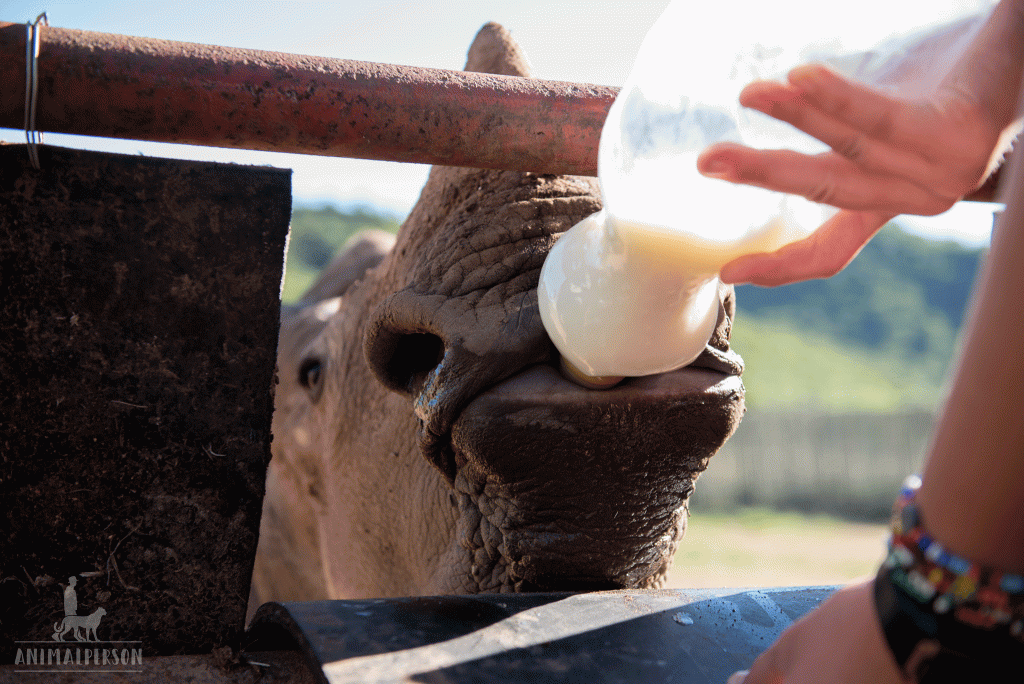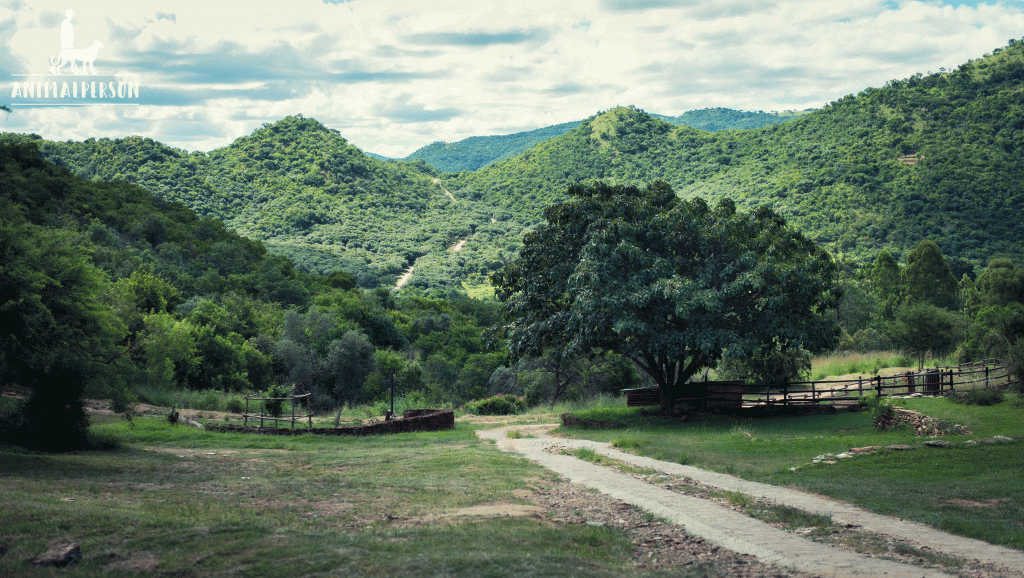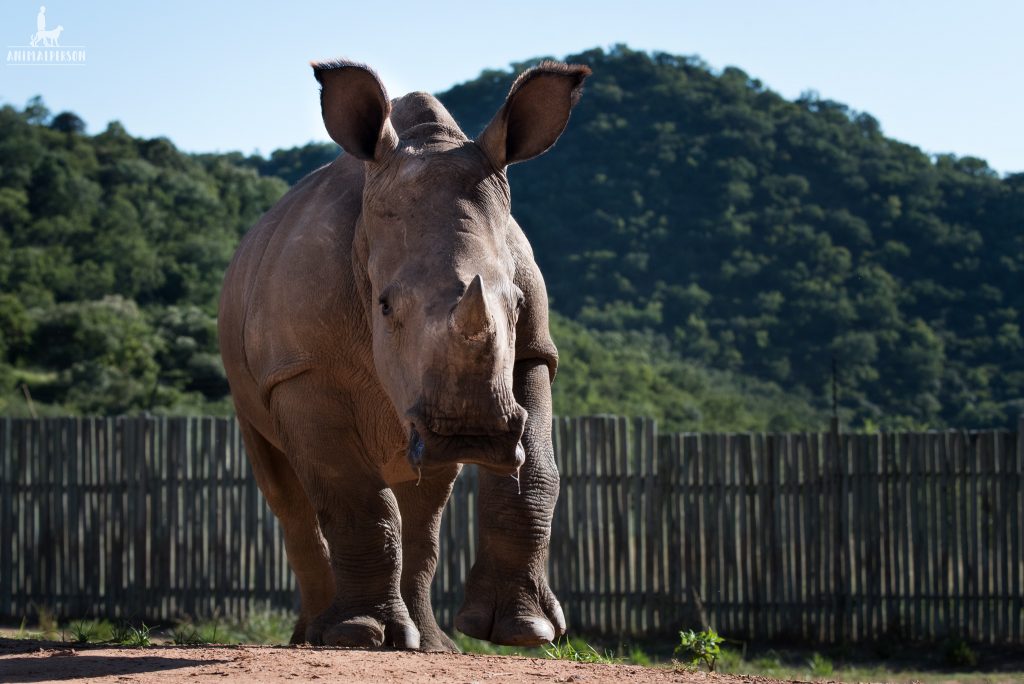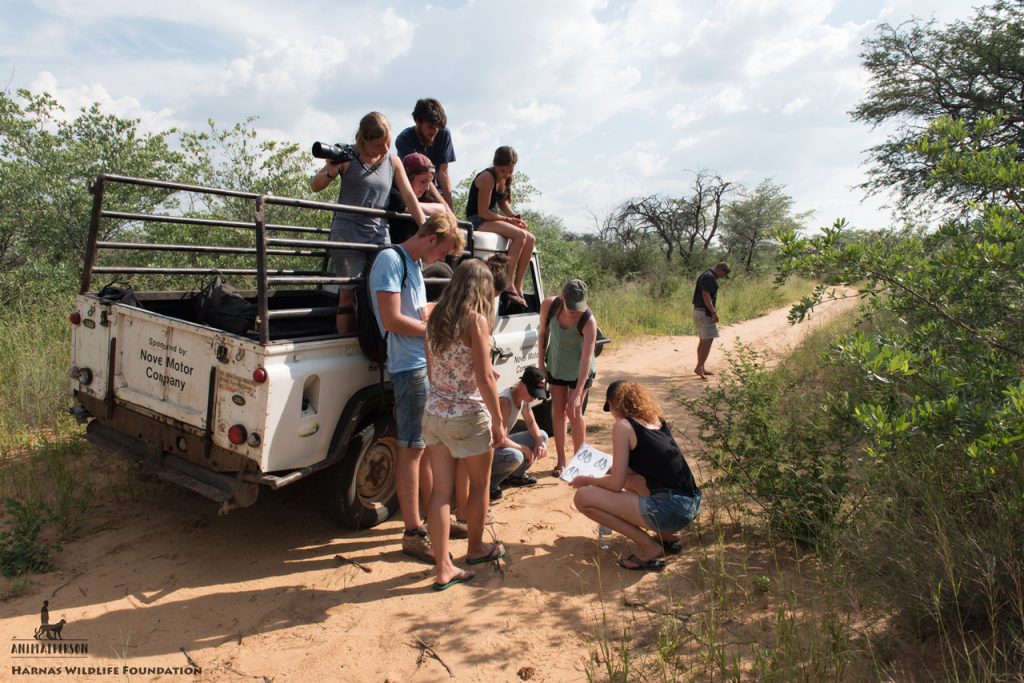
A motor boat – they sound like little motor boats. I don’t care if you agree or not, I do like that picture. It’s a constant deep humming sound, not too low-pitched yet very bassy. The low-lying sun throws long shadows over the huge enclosure of the natural bush land.
I’m surrounded by the source of the humming motor boat sound – or better – surrounded by the sources: five cheetahs. Lean, long legged cats with a dark speckled fur. The number of dots and their size vary from cheetah to cheetah – kind of like their personal finger prints.
I’m here every day. I’m either accompanied by another volunteer or, as it’s today, I’m here all by myself. Normally, this isn’t allowed – safety issues. It’s my third trip to the rescue centre for wildlife – therefore I know how to act around cheetahs and I’m walking relaxed and confident between them. As orphans they have spent their whole life, starting at an early age, in the rescue centre. When I met them for the first time they were about knee-high; no they have reached my waist. But where is that place where you can be so close to those animals, both in a good and positive way?
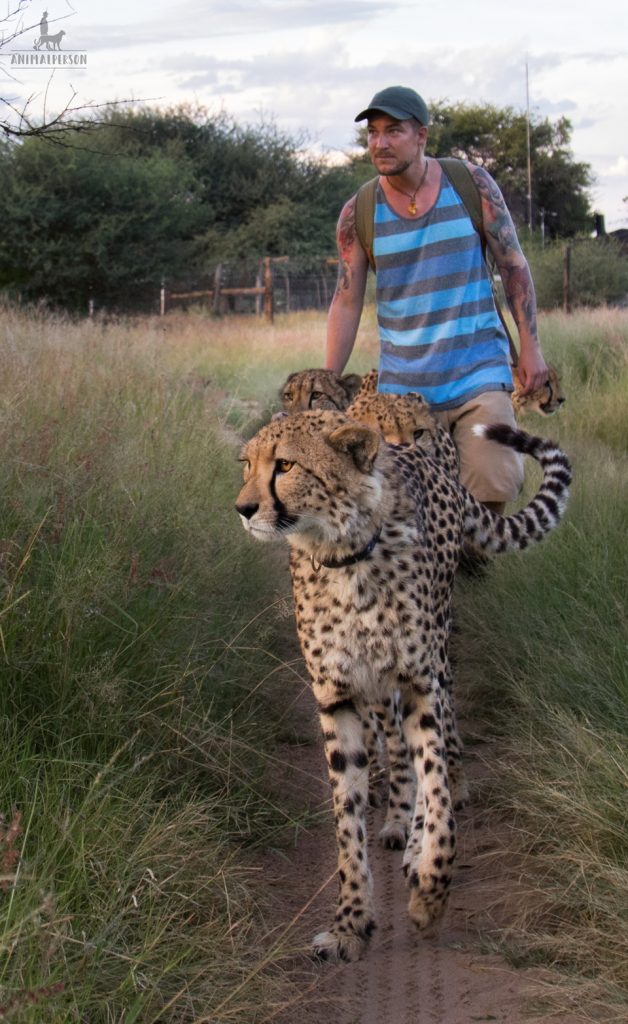
“Harnas” is Afrikaans and means something like armor or protection. The Harnas Rescue centre for wildlife has its origins in Namibia in 1978. There founder bought a mistreated vervet monkey from poachers. Since then a lot has changed and Harnas is still growing.
Today the Harnas rescue centre is a former cattle farm with about 10 00 hectares of bush land. It’s a home for a huge number of animals like lions, leopards (my favourites), cheetahs, caracals, guenons, baboons (not my favourites), wild dogs, mongooses, springboks, impalas, zebras, elands, gnus, ostriches, vultures, warthogs, meerkats and so on and so on…
Its focus lies on orphaned, mistreated, hurt and/or kept imprisoned animals from Namibia. And those have to be fed and nursed which of course costs money; perfect for a volunteer program. Amongst others, the caring for the animals is funded by the volunteer program which offers extraordinary experiences.
But: “Harnas is not for pussies!” Being a volunteer doesn’t mean petting animals all day long. It means hard and strenuous work under the African sun each and every day, seven days a week, for a time span between two weeks and three months. Yet, the work isn’t as physical strenuous as at the rhino rescue centre in South Africa where I worked in January and February 2017.
Link: Rhino Sanctuary
What you should never forget is, you’re working with wild animals. You need respect, good common sense and some effort. The meat for the animals doesn’t fall from the sky; it has to be cut to size. Often donkey meat is fed to the animals because it’s low-fat, cheap and is provided by the farmers nearby. Every part of the animal is used; the wild dogs for example love all kinds of offal. If you’re out of touch with reality and have your head in the clouds filled with thoughts like cats could be put on a vegetarian diet (that’s like feeding cows with meat) you shouldn’t come to Harnas as a volunteer. It’s definitely not a flower-power, fluffy pony farm.
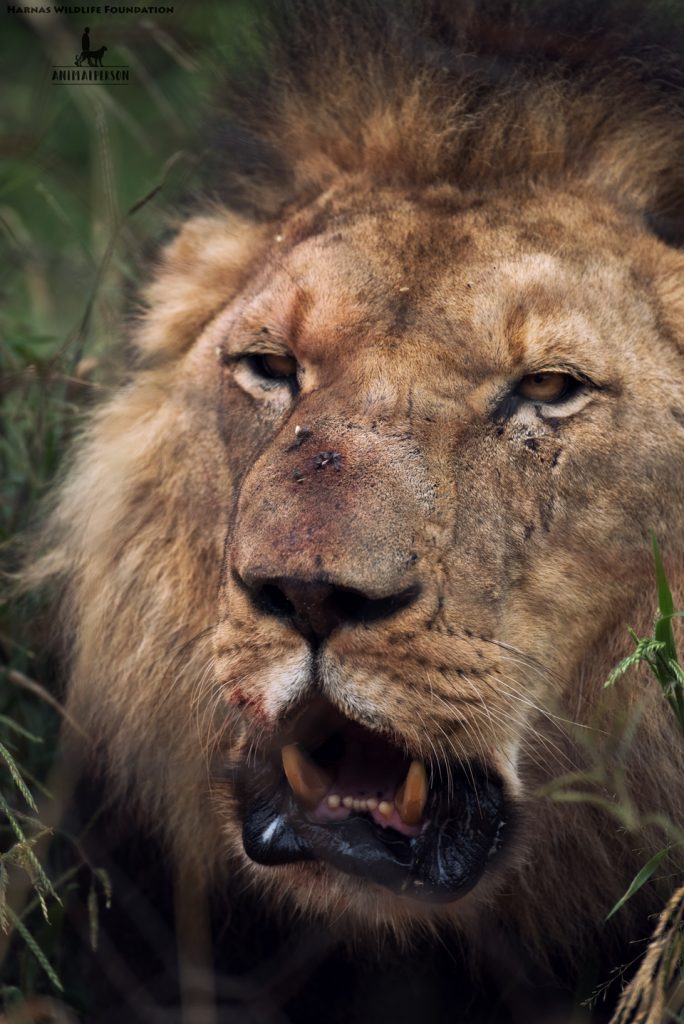
What a typical day at Harnas looks like:
6.30am
Getting up with up to 3 other people in a cabin in Volunteers-village; it’s a small number of cabins, the toilets and showers are in the centre of the village.
7.00am
Breakfast in the community house in the village; afterwards a 1.5 kilometers walk to the main farm
8.00am
“Treemeeting” people are divided into groups according to their work plan, e.g. prepare the food, cleaning the enclosures, AM tour, look after several animals, research in the wildline, farm work, building/repairing enclosures, read animal tracks, walks with different kinds of animals etc.
12.30pm
Lunch in Volunteers-village; break
03.00pm
“Treemeeting” new allocation of the tasks of the day
07.00pm
Dinner in Volunteers-village, leisure time
As you can see, a day in Harnas is packed. This time it was different for me, because I came as a photographer; but didn’t change the daily schedule.
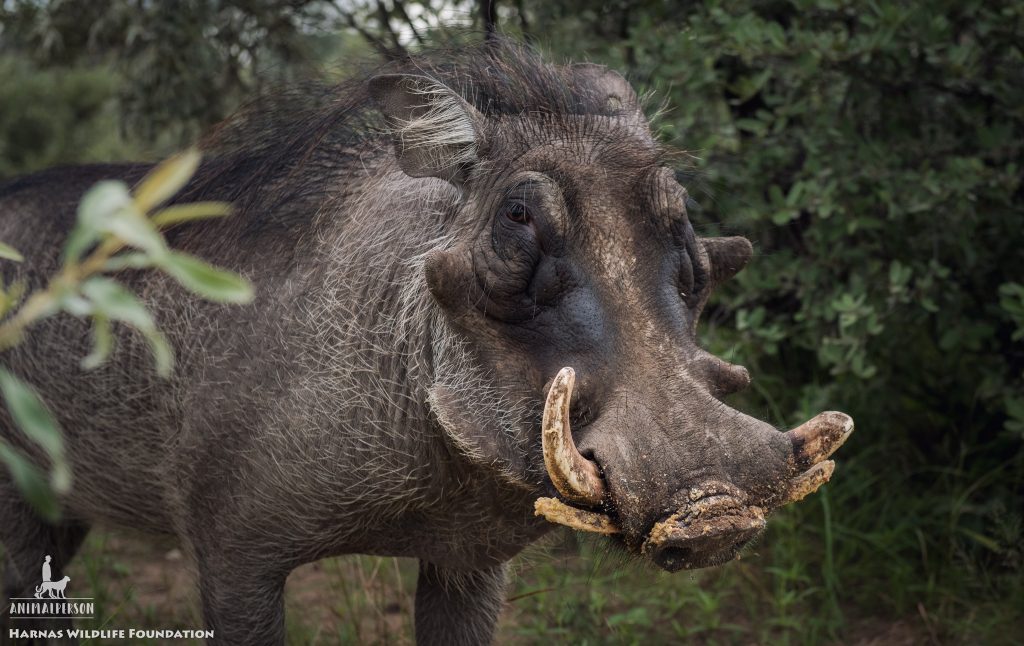
What has changed since 2015:
At the end, I want to list what has changed since my last stay in 2015, for those who have already been to Harnas
The food was to some extent very good. At least the first two weeks of my last stay, by and by it got worse, similar to 2015: always pasta, always minced meat sauce, almost no alternation.
Showers and toilets are way cleaner and are checked daily.
Of all the volunteers from 2015 only Tyla and Bonnita are still there.
Less volunteers, mostly between 20 and 30 persons. Only a few Scandinavians; in 2015 they made up to 60%, now 85% are (unfortunately) German-speaking (that was quite a shock for me after my long stay in South Africa)
Lapanight isn’t in Boma anymore, it’s now in the village. No more Amarulasong and no more dancing, in general less atmospheric as in 2015
Atheno is back in his old enclosure.
Leopard “Missy Joe” changed enclosure with caracal “Bonnie” <3 and "Juliette"
Of all the meerkats only “Hänsel” is still alive. (Got info Hänsel died now also)
Berta, Mimi and Micky are in a enclosure right next to the ostriches together with six other horses
The “Wild 23” are now the “Wild 21”.
“Bacon” the Warthog got killed.
Eland “Moose” wanders together with its herd through Gamearea and still visits Volunteers-village from time to time.

Closing words: If you want to work at a wildlife rescue station / sanctuary in Africa, you should question your motifs. Do you want to WORK with animals and get experiences with ANIMALS? Do you want to help the animals? OR do you just want to leave home, party and make as many spectacular selfies as possible? If you belong to the second group, please stay away from the volunteers work in Africa. You should instead book a nice party vacation on some Spanish island…
Supplement beginning of 2019: I have been told that in recent years a lot has changed there – and that supposedly not for the better. I hereby expressly point out that I do not want to advertise this sanctuary. In addition, I repeatedly advise that anyone who wants to participate in such a volunteer project should be informed in advance exactly. Just because a sanctuary did a good job years ago does not mean that it still does it today. It always depends on the leadership of each organization. Inform yourself always up-to-date and from several sources!

